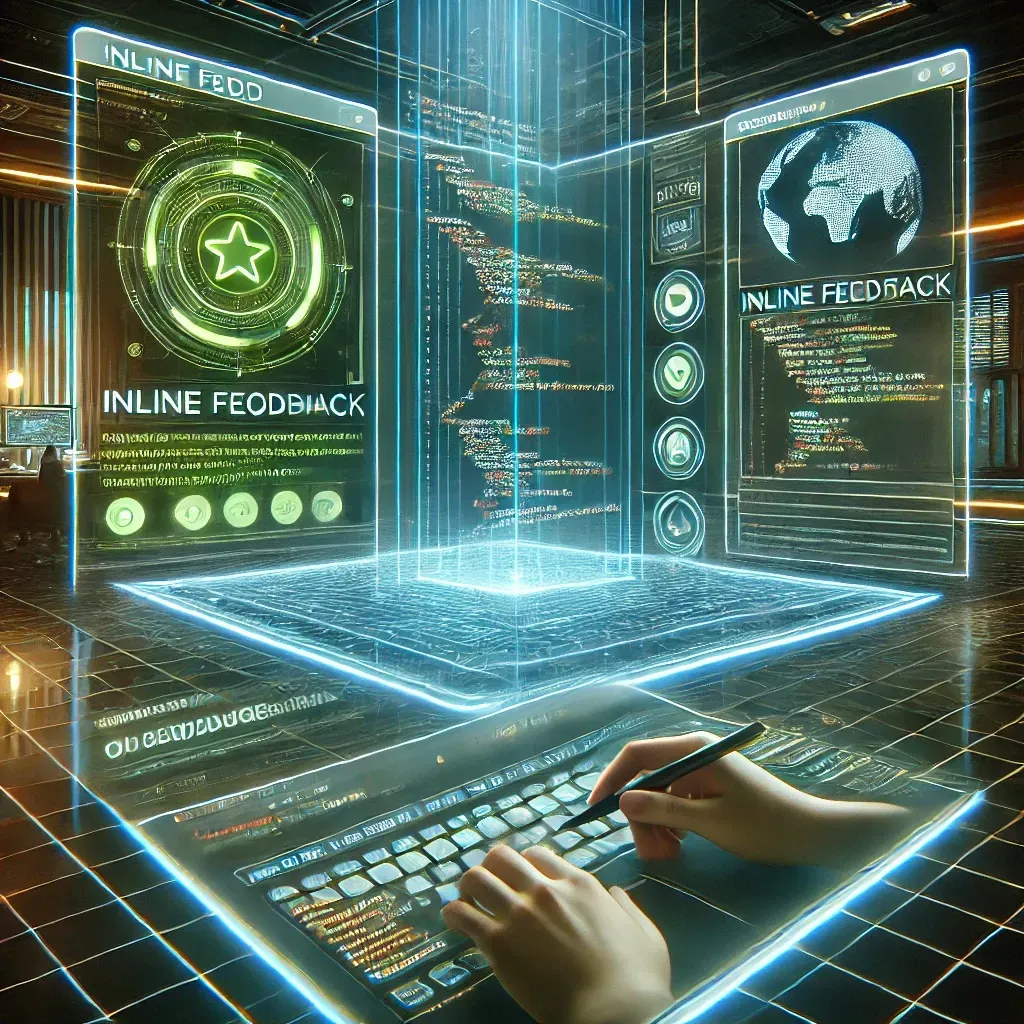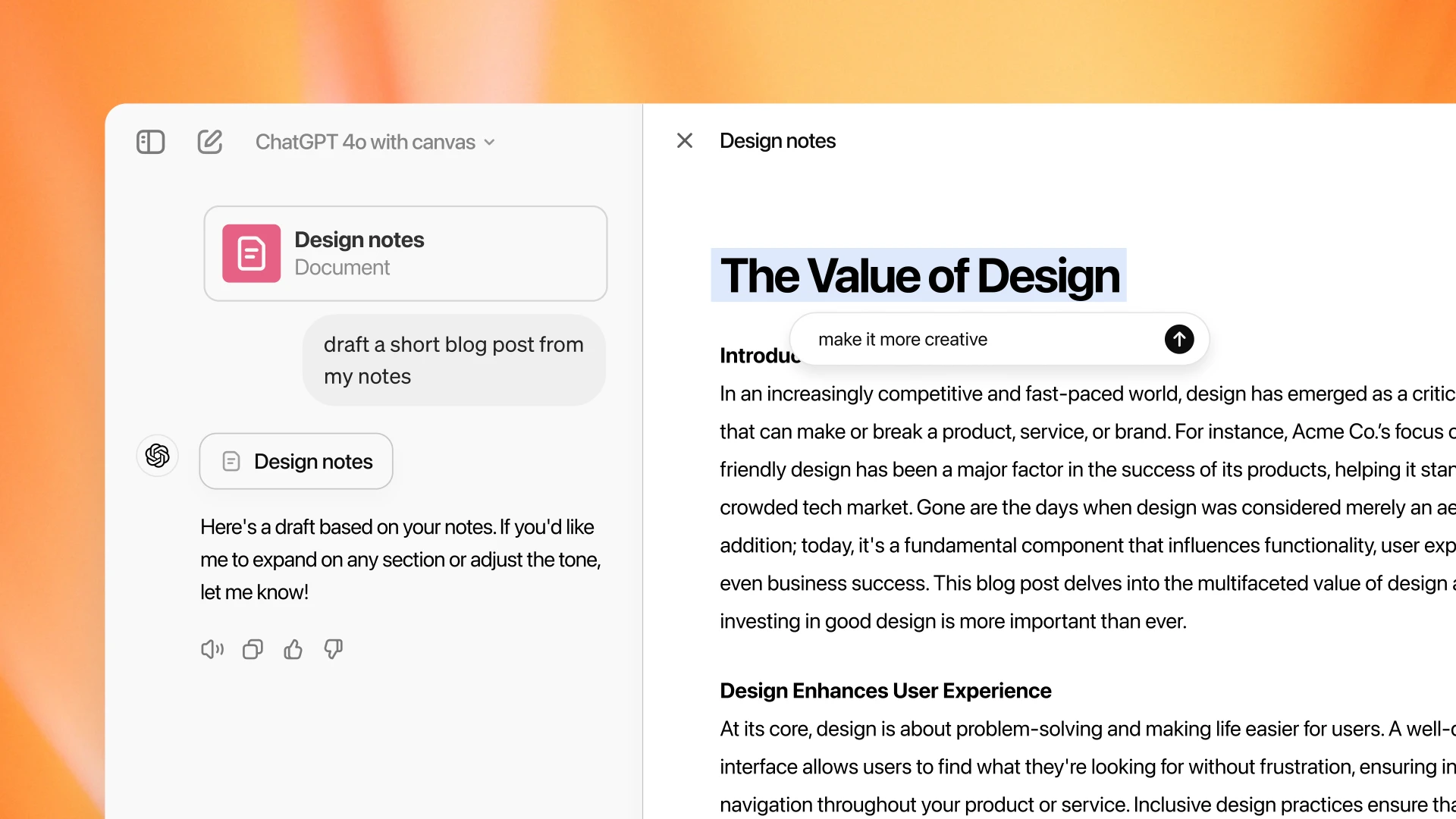AI Insights & Quick Answers
Deep dives, how-to guides, and rapid-fire solutions to level up your workflows
Elevate Your Business Game With Smarter No-Code Systems and AI Integration

Canvas For Collaboration: AI-Powered Workspace for Coding & Writing
Introduction:
AI often feels like a one-way interaction, but what if it could become a true partner? Canvas, OpenAI’s new visual workspace, allows you to collaborate directly with AI on writing and coding in real time, transforming how you refine content, debug code, and track changes. Many teams still struggle with traditional AI tools that can’t adapt to their writing and coding needs in real time. With Canvas, you can now seamlessly improve your work while collaborating, together.
In today’s rapidly advancing AI productivity tools, OpenAI has launched a groundbreaking feature that transforms how we collaborate on writing and coding projects—Canvas, a visual workspace designed to elevate your interactions with ChatGPT, now available in early beta.
Whether you're a developer looking to optimize your code or a content creator refining your writing, Canvas empowers you to collaborate with ChatGPT in an entirely new way. It is now available to ChatGPT Plus (premium) and Team (collaborative) users, with broader access rolling out soon.
Check out the full details of this groundbreaking tool in OpenAI's official announcement: Introducing Canvas.

What is Canvas?
Canvas is a new visual interface powered by the advanced GPT-4o model, optimized for collaborative tasks, offering faster and more accurate feedback than earlier versions. Instead of interacting through the chat window alone, Canvas provides a separate workspace where you can directly engage with your projects—whether writing or coding. It opens up a new level of AI-human collaboration, allowing users to make real-time edits while receiving instant feedback from ChatGPT.
Currently available in beta to ChatGPT Plus and Team users, Canvas will expand to Enterprise and EDU users next week, with Free users gaining access once it exits beta.
Key Features for Writers
Canvas offers a variety of tools designed to streamline the writing process, allowing for greater creativity and precision:
Inline Suggestions: As you write, ChatGPT provides in-context feedback on grammar, style, and clarity, allowing you to fine-tune your text without breaking your flow.
Adjust Content Length: Easily expand or condense your content with a single click, ensuring your message fits the required format.
Change Reading Level: Adapt your content’s complexity to suit any audience, from Kindergarten to Graduate School, helping you target the right tone and depth.
Provide Final Polish: Canvas offers final edits to ensure consistency in tone, grammar, and structure, so your content is polished and professional.
Insert Emojis for Emphasis: For more casual or visually engaging content, Canvas can insert emojis to make the tone lighter or more engaging.
Key Features for Developers
For developers, Canvas makes coding more transparent and efficient by providing real-time debugging suggestions, automatic log insertion, and seamless code review—reducing back-and-forth with traditional tools. It’s especially useful for managing iterative development, debugging, and revising code:
Code Review: Canvas offers real-time code suggestions, improving structure and efficiency so your code remains clean and optimized.
Add Logs for Debugging: It automatically adds print statements to help trace and debug issues, saving time and manual effort.
Comment Code: Clear, easy-to-understand comments are added to help you and your team follow the code’s logic more efficiently.
Fix Bugs: Canvas identifies and fixes code issues, providing solutions you can immediately test.
Port to Other Languages: Canvas can translate your code to Python, JavaScript, C++, and more.
Collaborating with AI in Real-Time
Canvas isn’t just a tool—it’s a collaborator. By working in a visual workspace, you have complete control over your project, receiving real-time, context-aware feedback from ChatGPT as you make edits. You can highlight specific sections to guide ChatGPT’s focus or directly edit text and code while receiving real-time suggestions.
By integrating real-time feedback into your workflow, Canvas allows for more iterative, fluid collaboration, saving time while enhancing creativity and problem-solving.
This feature opens automatically when ChatGPT detects that it could be useful, or you can trigger it manually by typing "use Canvas" into the chat.
Boosting Performance and Productivity
In testing, the Canvas-enhanced GPT-4o model outperforms traditional models by 18% in accuracy for targeted edits and 30% in improving comment quality for code. These improvements mean you’ll spend less time on manual edits for grammar or code structure and more time focusing on creative or strategic tasks, boosting overall productivity.
Getting Started with Canvas
Ready to try Canvas? Here’s a simple guide:
Select the GPT-4o model from the model picker.
Prompt ChatGPT to open Canvas by typing “use Canvas.”
Begin editing and take advantage of the workspace’s writing and coding shortcuts to streamline your project.
The Future of Canvas and AI Collaboration
As we look ahead, Canvas is set to expand its capabilities. While it currently focuses on writing and coding, future updates will likely include applications for data science, research, and design workflows—making Canvas an indispensable tool across multiple domains.
OpenAI plans to refine Canvas based on user feedback and add new features to further enhance its role in AI-powered collaboration.
The introduction of Canvas marks a significant shift in how professionals collaborate with AI. By combining real-time feedback, targeted editing, and a visual interface, Canvas transforms how writers and developers interact with their projects, making it easier to create, revise, and perfect their work.
Exciting things are coming soon! Keep an eye out for our product launch in early November, which will include new features from ChatGPT. Stay tuned for early November—exciting new features are just around the corner!

Most business owners are frustrated from wasting time and money. At Systems Shaper we turn your business into a selling machine. Clients who work with us attract more customers and build stronger brands.
Company
Services
Policies
Made With ❤️ By Systems Shaper
Systems Shaper Inc. © 2026. All rights reserved.
